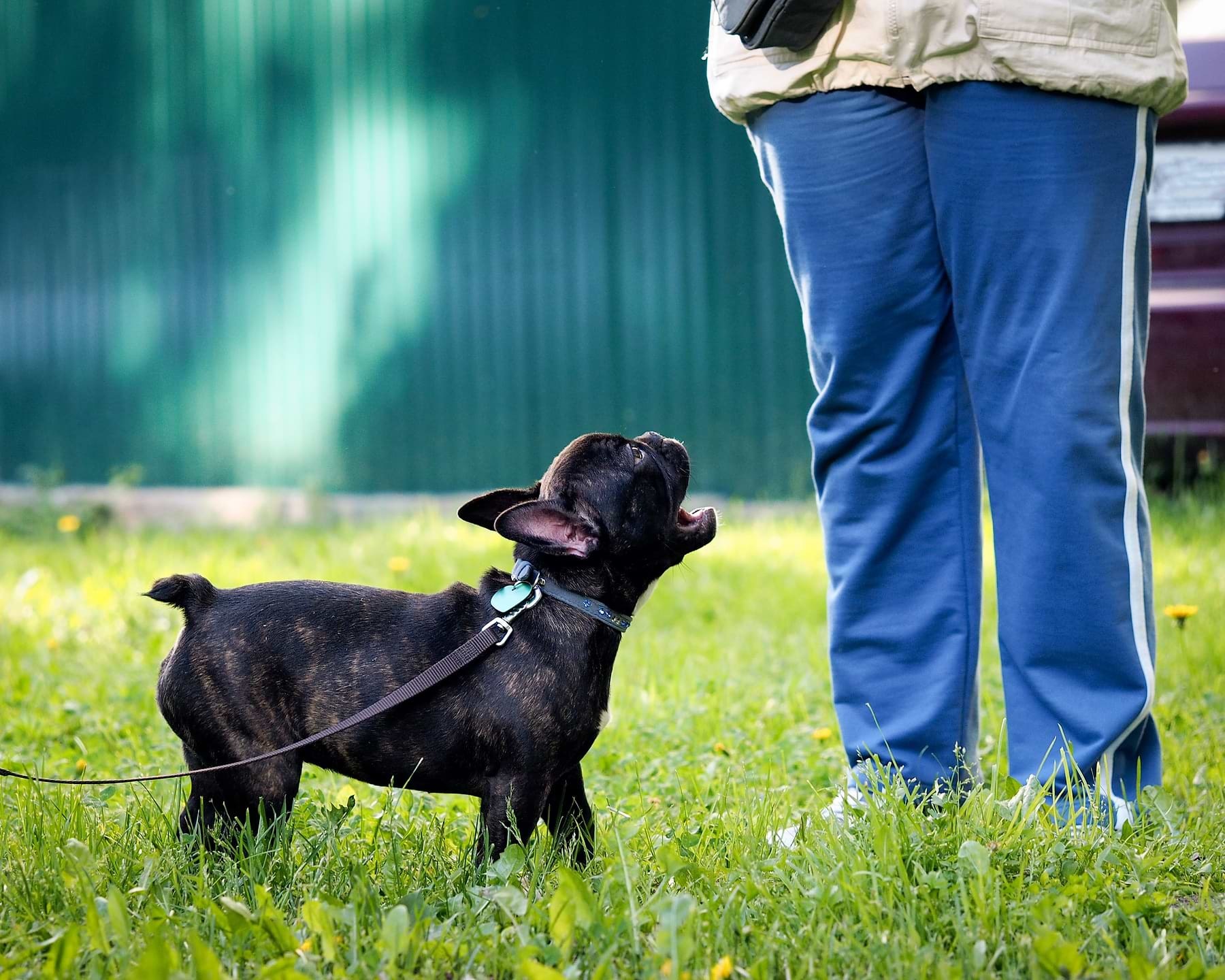Dogs can bark for a wide variety of reasons. Sometimes, your dog might be barking as a happy response or as a means of greeting. Depending on your dog and the tone of their bark, the noise might not sound particularly welcoming, but it can still be meant in a friendly way.
Then, it is also possible that your dog is trying to get your attention. If you regularly give your pet some kind of reaction after they begin barking, then they are being taught that this method works. Even if your reaction could be considered a negative one (saying “no,” or telling your dog to stop), dogs can still interpret that as a positive. This might seem counterintuitive, but your dog is searching for any reaction from you at all. Even a negative reaction is still a reaction and will reinforce the barking behavior.
Your dog could also be barking as a means of expressing their fear over the current situation. Lastly, your pet could be barking aggressively. If that is the case, they are likely doing so out of fear. If your dog has a tendency to react in an aggressive way when frightened, it is time to consult with a veterinarian.
1. Identify What Exactly Puts Your Dog on Edge
As we mentioned, your dog might be barking at visitors as a fear response, in order to get your attention, or for any number of other reasons. This is why it can be immensely helpful to figure out what it is specifically that your dog is reacting to. Are they scared of the sound of knocking or the doorbell ringing? Otherwise, perhaps they are not used to meeting new people, so someone different entering their home is a shock.
In either case, you are going to want to focus on desensitizing your dog to these stimuli. If you suspect that your pet is on edge as a result of the sudden ringing of the doorbell, work to create calm associations with the sound. On the other hand, if your dog was not socialized much in the past, and now has trouble trusting strangers, teach them that people can be fun. The process of socializing a shy dog can have its challenges, but it can be deeply rewarding as well.
2. Give Them a Homebase To Go To
A major reason that your dog may start barking at visitors is that they feel that their territory could be threatened in some way. One of the greatest ways to combat this fear is to give your dog a space that is all their own. This place should smell like them, and act as their safe space whenever they need it. Many pet parents and dogs alike find the perfect pet home base in the form of a crate.
Crates are incredibly useful tools for both humans and dogs. For humans, crates are compact, convenient, and often portable. For dogs, a crate represents a safe haven that inspires natural denning instincts, making it even more desirable. By having their crate always present, your dog will know that this is a spot for them to fall back on whenever they are in need of reassurance.
Not only that, but once you have successfully crate trained your dog, you can also tell them to return to their crate when company arrives. Since they are in the space where they feel the safest, they will automatically be calmer. Additionally, giving your dog a simple command to follow will also help to get their mind off of the current situation. We’ll talk about that more later in this article.
3. Ignore, Ignore, Ignore
The vast majority of us are not used to ignoring our canine companions, so this method can feel a bit counterproductive at first. After all, many of our first reactions would be to make some kind of noise of displeasure or even verbally tell our dogs to stop. Unfortunately, science has not yet advanced far enough that we can hold prolonged conversations with our dogs. As a result, explaining to them why barking at the door is unnecessary is not a worthwhile strategy.
In the meantime, it is often best to go the exact opposite route. When your dog inevitably begins to bark as soon as a knock or doorbell is heard, simply ignore the sound entirely. Our dogs typically make noises like barking to get a reaction out of us, so your pet will likely look at you at this moment. If they see absolutely no change in your demeanor, they will eventually realize that their barking does not accomplish anything.
As well as ignoring your dog’s barking, you should also ignore the doorbell or knocking sound entirely. Due to the potentially rude nature of this exercise, it is best to ask someone for their help in advance, rather than surprising an unlucky neighbor. When your dog sees that neither their barking nor the door is getting any reaction out of their pet parent, they are much more likely to settle down.
Once your pet does begin to successfully ignore the sound of the knocking or ringing, you are finally ready for the fun part — treats! Have some of your dog’s favorite high-reward treats at the ready to really drive the message home. After that, repetition is the name of the game. Keep doing this same exercise until your dog regularly ignores the sound.
4. The Fine Art of Distraction
Distraction can be a very powerful tool when it comes to getting your dog to calm down. Oftentimes, it is the fixation on the current stimuli that is causing your dog to bark. Therefore, if you shift their focus to something else, they are much more likely to calm down. Directing them to go back to their crate with your chosen command is an excellent strategy, but you can also take a few other routes.
If you are perhaps in a location where your dog’s crate is not available, or if you simply want to try something different, you can also give your dog several other directions. For instance, if your pet knows how to sit or lie down, either of those are simple tricks that will require just enough attention from your pet.
If you do not want to give your pet a command at all, or if you are perhaps just in the process of training them, a fun toy could do it. The real key here is using something entertaining and preferably noise-making that will get and keep your dog’s attention.
5. Put Your Pet Somewhere Else When Visitors Enter
This might not be the most graceful solution, but it can work wonders. If you know when someone is coming to visit, you can put your dog in a separate room ahead of time. This way, they will not be able to see or hear the visitor entering. You can make this process work more seamlessly by communicating with your visitor that they should not knock or ring the doorbell.
It should go without saying that your dog must have any and all necessities with them in their room (food, water, etc.). They also should not be alone in that room for longer than necessary. If your dog is left on their own for too long, then they might become even more anxious, or could display signs of separation anxiety. Feel free to also give them toys, blankets, and whatever else could make them more comfortable for a short time.
Once your visitor has entered the house and made themselves at home, you can then let your dog out. If your dog sees someone already in their house rather than actively entering it, they might find this easier to tolerate.
6. Go on a Walk Together
Going for a walk with your pet is one of the biggest joys of having a dog. You get to explore the world with your canine companion by your side. Inevitably, the activity of going on a walk together creates many positive associations for both dog and pet parents. These same positive associations can be fostered if you bring someone else on your walk together.
Rather than having someone come to your door, knock, and possibly startle your pet, try meeting them outside instead. Bring your dog along and go for a walk together. This does not have to be a long or particularly strenuous journey. The important part is that your dog and your guest are meeting on neutral ground, but there is another advantage as well.
That’s right; this tip works double duty by also getting your pet some additional exercise. When your dog is sufficiently worked out and has used up a significant amount of their energy, they are going to be much calmer. Having your pet in a state of calm is ideal when meeting new people or entering new situations. That way, they are more likely to come at it with an open mind and will settle quickly.
All Bark and No Bite
No matter why your dog is barking at visitors, there are a variety of steps that you can take to minimize the issue. By working with your dog and your visitors, you can help create a peaceful household for everyone.
Sources:
Why Dogs Bark: Stop Excessive Barking | Web MD
Training Your Dog to Ignore Distractions No Matter Where You Are | AKC
Dog Separation Anxiety: Causes, Prevention, and How to Stop | AKC

The Diggs Team
We believe our dogs deserve safer, better designed pet products.
You might also like
Crate training tips, stories and inspiration
View all blogsIn Your Diggs
Share your photos with #DiggsPet and tag us @DiggsPet on IG and TikTok.



